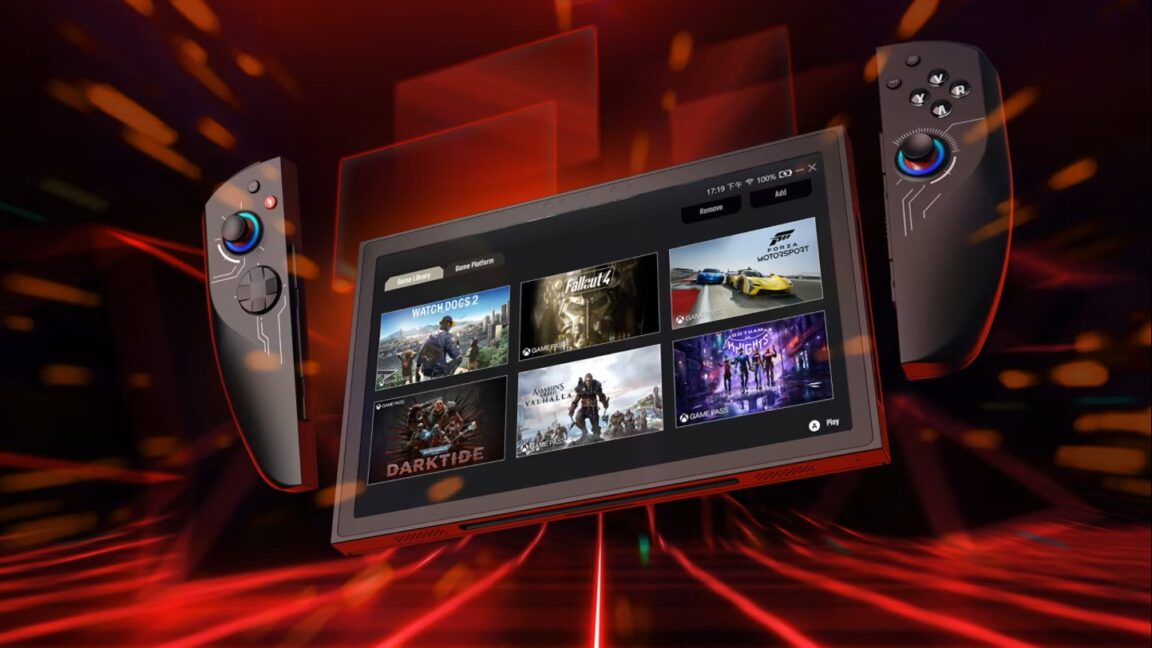arstechnica.com
Where there's volumetric smoke, there's dynamic fire Nvidias 50-series cards drop support for PhysX, impacting older games The 32-bit tech on older games can't bring snazzy effects forward. Kevin Purdy Feb 18, 2025 6:25 pm | 18 It's hard to tell from provided screenshots, but it seems like some of the rain particles here might be benefiting from some PhysX magic. Credit: Rocksteady Games/WB It's hard to tell from provided screenshots, but it seems like some of the rain particles here might be benefiting from some PhysX magic. Credit: Rocksteady Games/WB Story textSizeSmallStandardLargeWidth *StandardWideLinksStandardOrange* Subscribers only Learn moreMost PC games that you can play on a modern PC would run faster on an Nvidia RTX 5080 or 5090 than, say, a GTX 1070. But some games, from a particular phase of enthusiasm for particles, destructible environments, and smooth-moving hair, will take a notable hit if their owners upgrade to the latest Nvidia cards.That's because PhysX, once a dedicated physics simulation tool and card that became a selling point for Nvidia's gear, has been largely deprecated on Nvidia 50-series cards. The transition was announced in January, but it seems to have taken some time for someone to notice the impact on 32-bit, PhysX-enabled games (as seen by PCGamesN). The most recent of these affected games, Assassin's Creek IV: Black Flag,came out in 2013.What follows is a brief primer on PhysX: what it was, what it did, and why it's left out of Nvidia's road map. Ten thousand to 40,000 strands of tessellated, HairWorks-enhanced hair on this Polish legend. Credit: CD Projekt Red Ten thousand to 40,000 strands of tessellated, HairWorks-enhanced hair on this Polish legend. Credit: CD Projekt Red From Citadel Station to Geralts HairMany years ago, if you wanted impressive physics in your game, someone had to build it in code. Seamus Blackley, who would one day create and design the Xbox, took his graduate-level physics knowledge and applied it toSystem Shock, making it the rare game where the player's body had real mass to it and grenades bounced off walls like you might think they would.These days, game engines like Unity can handle a lot of the physics thinking for developers. But in the years between, there was PhysX. PhysX started as a simulation engine from a Swedish firm, NovodeX, then was acquired by Ageia in 2004 and expanded to include hardware cards.PhysX cards held such promise that, at one point, Tim Sweeneyback then, known primarily forUnreal Tournamentconsidered adding support for a PhysX card for the2007 version of his game.But Nvidia bought Ageia in 2008 and got to work incorporating PhysX into its own GPUs. The newly green-hued PhysX showed up as an SDK available to all PlayStation 3 developers and made outreach efforts to get developers thinking about PhysX support from the beginning. It worked, to some extent, with games likeMafia II and Batman: Arkham City showing off advanced particles, collision, and other physics effects. You could shoot a wall and leave holes in it, and smoke didn't look so much like a flat sprite trick, but a real thing that took up space.Nvidia's PhysX offerings to developers didn't always generate warm feelings. As part of its broader GamesWorks package, PhysX was cited as one of the reasons The Witcher 3 ran at notably sub-optimal levels at launch. Protagonist Geralt's hair, rendered in PhysX-powered HairWorks, was a burden on some chipsets.PhysX started appearing in general game engines, like Unity 5, and was eventually open-sourced, first in limited computer and mobile form, then more broadly. As an application wrapped up in Nvidia's 32-bit CUDA API and platform, the PhysX engine had a built-in shelf life. Now the expiration date is known, and it is conditional on buying into Nvidia's 50-series video cardswhenever they approach reasonable human prices. See that smoke? It's from Sweden, originally. Credit: Gearbox/Take 2 See that smoke? It's from Sweden, originally. Credit: Gearbox/Take 2 The real dynamic particles were the friends we madeNvidia noted in mid-January that 32-bit applications cannot be developed or debugged on the latest versions of its CUDA toolkit. They will still run on cards before the 50 series. Technically, you could also keep an older card installed on your system for compatibility, which is real dedication to early-2010's-era particle physics.Technically, a 64-bit game could still support PhysX on Nvidia's newest GPUs, but the heyday of PhysX, as a stand-alone technology switched on in game settings, tended to coincide with the 32-bit computing era.If you load up a 32-bit game now with PhysX enabled (or forced in a config file) and a 50-series Nvidia GPU installed, there's a good chance the physics work will be passed to the CPU instead of the GPU, likely bottlenecking the game and steeply lowering frame rates. Of course, turning off PhysX entirely raised frame rates above even native GPU support levels.Demanding Borderlands 2 keep using PhysX made it so it "runs terrible," noted one Redditor, even if the dust clouds and flapping cloth strips looked interesting. Other games with PhysX baked in, as listed by ResetEra completists, include Metro 2033,Assassin's Creed IV: Black Flag, and the 2013Star Trekgame.Commenters on Reddit and ResetEra note that many of the games listed had performance issues with PhysX long before Nvidia forced them to either turn off or be loaded onto a CPU. For some games, however, PhysX enabled destructible environments, "dynamic bank notes" and "posters" (in theArkham games), fluid simulations, and base gameplay physics.Anyone who works in, or cares about, game preservation has always had their work cut out for them. But it's a particularly tough challenge to see certain aspects of a game's operation lost to the forward march of the CUDA platform, something that's harder to explain than a scratched CD or Windows compatibility.Kevin PurdySenior Technology ReporterKevin PurdySenior Technology Reporter Kevin is a senior technology reporter at Ars Technica, covering open-source software, PC gaming, home automation, repairability, e-bikes, and tech history. He has previously worked at Lifehacker, Wirecutter, iFixit, and Carbon Switch. 18 Comments










